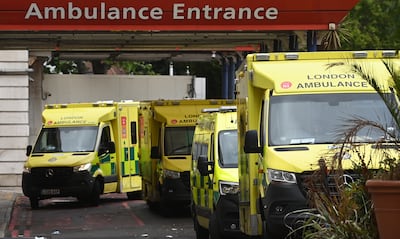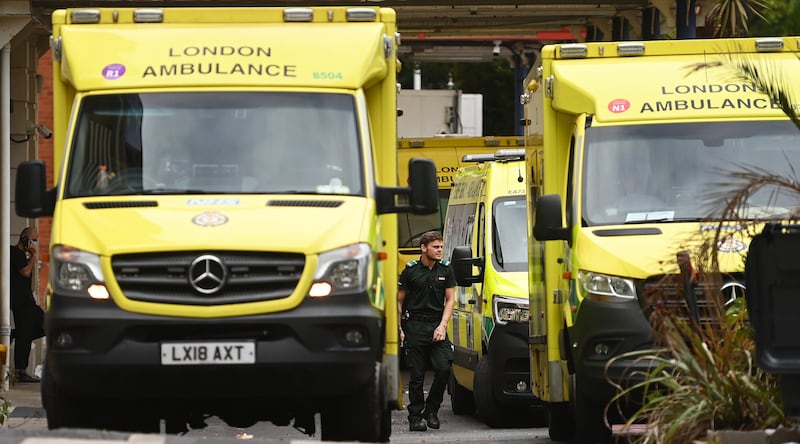Ken Shadbolt, 94, was in good health for his age and was often seen cycling around the Cotswolds on his electric trike.
However, in March, he fell after getting out of bed and could not stand.
Logs showed he made three phone calls in the hours he waited for the South Western Ambulance Service to arrive, each of them increasingly desperate.
During the final call he told the handler he felt “terrible sick” and was struggling to breathe. He pleaded: "Can you please tell them to hurry up or I shall be dead."

By the time the ambulance finally reached him at 8.10am, four hours after his last call, he was unconscious. He died later that day from a large bleed on the brain.
Figures show ambulance waiting times have become significantly worse in England over the past year.
But why are they so bad? And what does the government plan to do about it?
The National explains.
How bad is the problem?
According to the latest data from the NHS, ambulances took 59 minutes and seven seconds on average to respond to category two calls, which are classed as emergencies, in England in July.
That figure was up from 51 minutes and 38 seconds in June.
Ambulances responding to life-threatening incidents — classed as category one — took an average of nine minutes and 35 seconds.
That is well above the target of seven minutes and the joint-longest average response time since records began in 2017.
How long should ambulances take to respond?
Ambulance response times represent the time a 999 call is received to when the vehicle arrives at the patient’s location.
Since 2017, waiting times have been governed by performance targets.
Responses to emergency calls, which are classed as category two and includes strokes or severe burns, should be made within 18 minutes. That means people are currently waiting more than three times longer for an ambulance.
For urgent calls, referred to as category three, which includes the late stages of labour and non-severe burns, 90 per cent of calls should be responded to within 120 minutes.
And 90 per cent of category four calls, classed as non-urgent, which could include the likes of diarrhoea or vomiting, should be responded to within 180 minutes, according to the targets.
How long has the problem been building?
Since the pandemic.
According to the government, from 2017 and 2019, average response times actually declined and remained stable at around the target of seven minutes.
At the start of the Covid outbreak in March 2020, response times to category one incidents climbed to more than eight minutes. Between April and July of that year, response times improved.
However, they have deteriorated since summer last year, with increases in the average response time for the most urgent calls and the 90th percentile targets being missed.
“Response times for the same period for categories two to four show a similar trend to the category one data,” said a paper published on the House of Lords Library.

Why is it taking longer for ambulances to reach people?
The health service, the NHS, has come under increasing strain, with waiting lists at an all-time high.
In a recent survey by the Royal College of Nursing, 63 per cent of staff said emergency care was taking place elsewhere, such as in corridors, instead of on wards.
At the end of May, waiting lists for routine treatments had reached 6.6 million. That was one million more than the previous month.
More than 100,000 staff vacancies across the NHS and a lack of social care capacity means it is taking longer to discharge patients than it should. That has left ambulances queueing outside hospitals, slowing down response times to new calls.
What will be done about it?
Former health secretary Steve Barclay recently called ambulance handover times the health service’s “number one priority” this winter.
He has since been replaced by Therese Coffey, who was appointed health secretary in Liz Truss’s Tuesday reshuffle.
On Wednesday, Ms Coffey reiterated how important the issue was to the government.
Speaking to Sky News, she set out her top four priorities: "A, B, C, D — ambulances, backlogs, care, doctors and dentists".
She also pledged to do more on delayed discharges of patients, which prevents others from accessing hospital beds.
"There are actually thousands of people currently in hospital today who don't need clinically to be in hospital, that need that care for once they leave hospital," she told the BBC.
She said it was "critical" to focus on both social care and healthcare.







